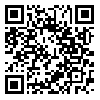BibTeX | RIS | EndNote | Medlars | ProCite | Reference Manager | RefWorks
Send citation to:
URL: http://ijn.iums.ac.ir/article-1-1581-en.html
2- MS in Medical-Surgical Nursing, School of Nursing and Midwifery, Shahrekord University of Medical Sciences,Shahrekord, Iran (Corresponding author). Tell: 09132850361 Email: Ladan.Naseh@gmail.com ,
3- Associate Professor in Community Health Nursing, School of Nursing and Midwifery, Iran University of Medical Sciences, Tehran, Iran
Abstract
Background & aims: People undergoing ostomy challenge with multiple physical, psychological and social complications. However, Self-efficacy may lead them to the acceptance of stoma, adaptation with it and improve quality of their life. Accordingly the aim of this study was to determine total self-efficacy of stoma patients and its dimensions.
Material & Methods: It was a descriptive cross-sectional study. A total of 84 patients with ostomy who referred to selected educational centers of Tehran University of Medical Sciences and Iranian Ostomy Association (IOA) recruited by convenience sampling. Data were collected using personal information form and Stoma Self-efficacy Scale (Stoma SE Scale) and analyzed by descriptive statistics using SPSS-PC (v. 15).
Results: The mean score of Self-efficacy dimensions was determined as, Stoma Care (55.8 ± 11.6) and Social (42.1 ± 13.2). The mean score of total self-efficacy was (98 ± 22.6). In stoma care self-efficacy subscale, the highest obtained mean score were related to “prevent having stoma bleeding and damage” (4.5 ± 0.8), “Follow the stoma therapist's instructions for handling the stoma” (4.5 ± 0.9), “Follow the doctor's advice for taking care of your stoma and nutrition pattern”( 4.5 ± 0.8), and the lowest mean score were related to “Take care of the stoma when you are ill” (3.1 ± 1.4). In social self-efficacy subscale the highest and lowest mean score were related to “Tell your close friends about the stoma” (4 ± 1.4) and “Have the same sexual satisfaction” (1.8 ± 1.3) respectively.
Conclusion: The findings of this study can be useful to enhance nurses' knowledge to improve training and supportive interventions for stoma patients and their families.
Received: 22 May 2013
Accepted: 26 Aug 2013
Received: 2013/12/30 | Accepted: 2013/12/30 | Published: 2013/12/30
| Rights and permissions | |
 |
This work is licensed under a Creative Commons Attribution-NonCommercial 4.0 International License. |




